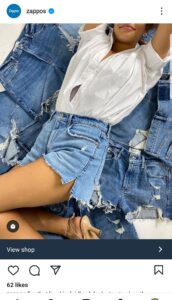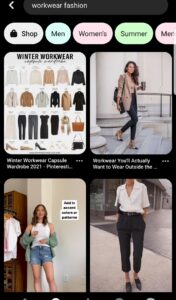According to a report by Statista, social ecommerce sales are forecasted to increase from $958 billion in 2022 to $2.9 trillion in 2026. Additionally, 51% of the general public has purchased on social media and would do it again versus only 8% that have purchased on social media platforms and wouldn’t do it again.
Many ecommerce businesses see these numbers and wonder, “How can I get a chunk of that?”. It’s not a one-size-fits-all answer, unfortunately. However, we do have a few steps to make it a little bit easier for you to decide which social media platforms are best for your business.
What is Your Reasoning?
First things first, decide why you need social media. Set your company goals – are you trying to push conversions or build voice and awareness? Is lead generation important to you? Before deciding which social media platforms are best for your company, you should set you KPIs (key performance indicators).
In today’s world, social media marketing is essential to most businesses, regardless of your marketing goals. Social media presence also allows the gap between customers and companies to shrink. Large and small businesses can have potential customers find them on social media and work to build important customer loyalty.
We have some key insights below on what demographics tend to appear on each platform and what their purchase intent is on each social account. Some socials are better for awareness and building customer relationships, while others are easier to shop and push converitions.
1. Instagram
Instagram is more about engagement and storytelling, often asking followers to share their own memories or travel stories. According to a Meta report, statistics show that 60% of people discover new products on Instagram, making it a great place to build awareness. Organically, you can build your customer base, relations, and trust.

You can easily make the account “shoppable” as well. Once verified, businesses can tag products in reels, stories and posts that directly take users to your shop. And when 130 million people click an Instagram shopping post every month, you don’t want to miss out on these marketing opportunities.
The user demographic on Instagram is widely varied and it is easy to find your niche. Instagram has over 1 billion monthly active users and more than half are daily users. A report by Statista states that over 60% of users are in the 18 – 34 yr old range.
Instagram is also full of influencers. If you have a strong following, or have an ambassador/affiliate program, this platform is great for sharing! Being extremely visual and personal, Instagram is one of the best apps for B2C companies and even start up companies. They can gain customer loyalty and engage closely with potential future customers.
2. TikTok
TikTok ranks as the second-biggest app in consumer spending, partly because of how easy it is to shop. You’ll find that TikTok is mainly dominated by people aged 20-39 years old (44%) and they are highly influenced by others to purchase. It has uniquely placed itself in an atmosphere that is driven by authentic, real people. This social media platform is great for B2C companies and for startups that need to grow quickly.
Just like Instagram, TikTok is a great place for genuine affiliates to promote brands that they truly believe in. TikTok has 1.2 billion monthly active users and almost half (49%) of TikTok users have made a purchase on the app. 61% of their users are female and 20% of all users come from a household with an income larger than $75,000.
Influencers can promote with links to websites and stores can now add direct product tags on videos. If you have a younger demographic and you need quick growth, getting your company on TikTok would be essential.
3. Pinterest

Shoppers love the search-engine-like platform Pinterest. Eight out of 10 users have saved a pin to a board with the intent to purchase. Ninety seven percent of idea searches on on this platform don’t specify a brand, but over 85% of these idea searches are for planned DIYs or event planning ideas. 70% of the 459 million monthly users are women that save posts related to fashion trends, home decorating, events or other crafty ideas. Users are looking for inspiration when they use this social platform. The platforms has an extremely strong hold on purchasing power – over 84% of users consult the site when making purchasing decisions, as reported by Neal Schaffer.
But is Pinterest “shoppable”? Yes!! Each pin is a photo linking to any webpage, such as a product page. Shopping pins or “rich pins” have the ability to share more information than a regular pin, including product details. Also, you can now have storefronts and there is a shopping search bar on the platform, making it easier for someone with a purchasing mindset to find your product and buy it directly.
4. Twitter
Being more of a thought leadership platform, Twitter leans more toward being informative than commerce. But Twitter tends to help develop brand awareness and voice. Most of their 465 million users are 25 to 34 years old (38.5%), with over 27% users living in urban areas. It is important to note that their users are 70% male, and only 29.6% are female, as reported by Omnicore.
Recently, they announced their attempt at catching up with the other platforms and introduced Twitter Shops. The feature aims to encourage users to go from talking about products on the platform to actually clicking through to browse the merchant’s selection, then check out. Generally though, until Twitter Shops catch some ground, today’s online users tend to shop on other social media platforms.
5. Facebook:
With nearly 3 billion monthly active users, Facebook is by far the most popular social network. Facebook encompasses a little bit of everything: some brand-building content, awareness, informative content and a shopping feature. Facebook allows companies to build a voice and to create customer relationships, along with promoting a Facebook store. Users don’t have to leave the platform to purchase on Facebook and tagging your own products is easy!
Facebook demographics is so wide that generally any type of customer is out there. But, if you are looking for customers aged 35 – 55, they are in an abundance on Facebook. Another interesting demographic stat is women and men are equally represented on this platform.
It is to be noted though, that because of the large user base and many options for sharing – organic posts can easily get lost. If you want to truly get brand awareness, and especially if you want to drive conversions, Facebook’s advertising should be used. Facebook has a massive ads platform that helps you reach even wider audiences and put your products in front of new faces. Hootsuite and We are Social reported that in 2021, 190 million people can be reached with a single Facebook Ad.
Although a Facebook page is really almost required for most businesses today, without Facebook Ads, growth can be slow and engagement will be lower than the other platforms.
So Which Social Media Platform Should My Ecommerce Business Be On?
Like we said before, it is incredibly hard to just give a straight answer. There is no cookie-cutter solution to this question, which is probably why it’s googled so often. However, once you look at what your KPIs and understand which social media platforms perform best at those KYIs, then you have to just start posting!
The bottom line is: don’t neglect social media because it can do a lot for your company. Starting out is tough and posting content can be tricky, but in the end social media has much to give.
If you are still unsure of where to start, Digitable would love to help you out. We offer full digital marketing services that include social media strategies. We would love to hear goals and see how we can assist you in helping your ecommerce business grow. Send us a message to start the conversation!
